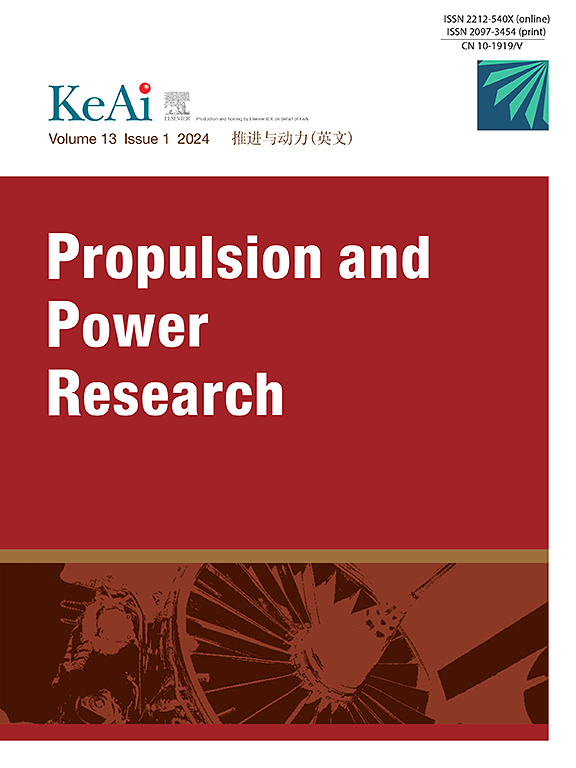用多通道能量法高效研究压气机匣结构对气动弹性稳定性的影响
IF 5.4
2区 工程技术
Q1 ENGINEERING, AEROSPACE
引用次数: 0
摘要
研究了机匣型线对跨声速压气机转子气动弹性稳定性的影响。为了阐明机匣型线对气动阻尼的影响并深入研究,将影响系数法和相移理论引入常规能量法,建立了多通道能量法。采用影响系数法计算了非定常压力,并基于相移理论重构了不同节点直径下的非定常压力。因此,多通道能量法比常规能量法、气动弹性特征值法和流固耦合法提供了更全面的信息。模拟了四种套管剖面。与直套管相比,凹缩套管不利于气动弹性稳定性。凸缩机匣可以缓解叶顶流场的阻塞,提高气动性能和气动弹性稳定性。多通道能量法进一步揭示了叶片自身和相邻叶片对AD的贡献。与直机匣相比,凸缩机匣不仅提高了叶片本身的AD,而且减小了相邻叶片的AD波动。因此,增加了最小AD。本文章由计算机程序翻译,如有差异,请以英文原文为准。
Efficient study on the influence of compressor casing configuration on aeroelastic stability using multi-passage energy method
This study investigated the influence of casing profiles on the aeroelastic stability of a transonic compressor rotor. To elucidate the influence of casing profiles on aerodynamic damping (AD) and delve into more detailed insights, the influence coefficient method and phase-shift theory were incorporated into the conventional energy method to establish the multi-passage energy method. The unsteady pressure was calculated using the influence coefficient method and the outcomes at various nodal diameters (NDs) were reconstructed based on the phase-shift theory. Thus, the multi-passage energy method offers more comprehensive information than the conventional energy method, the aeroelastic eigenvalue method, and the coupled fluid-structure interaction method. Four casing profiles were simulated. In contrast to the straight casing configuration, the concave shrinking casing was found to be detrimental to aeroelastic stability. The convex shrinking casing can alleviate the blockage in the tip flow field and improve both the aerodynamic performance and aeroelastic stability. The multi-passage energy method further revealed that the AD is contributed by the blade itself and the adjacent blades. In comparison to the straight casing, the convex shrinking casing not only enhances the AD of the blade itself but also diminishes the AD fluctuation of the adjacent blades. Consequently, the minimum AD is increased.
求助全文
通过发布文献求助,成功后即可免费获取论文全文。
去求助
来源期刊

Propulsion and Power Research
Multiple-
CiteScore
7.50
自引率
5.70%
发文量
30
期刊介绍:
Propulsion and Power Research is a peer reviewed scientific journal in English established in 2012. The Journals publishes high quality original research articles and general reviews in fundamental research aspects of aeronautics/astronautics propulsion and power engineering, including, but not limited to, system, fluid mechanics, heat transfer, combustion, vibration and acoustics, solid mechanics and dynamics, control and so on. The journal serves as a platform for academic exchange by experts, scholars and researchers in these fields.
 求助内容:
求助内容: 应助结果提醒方式:
应助结果提醒方式:


